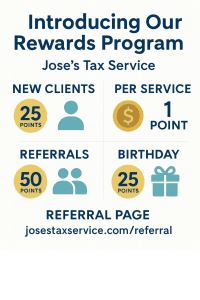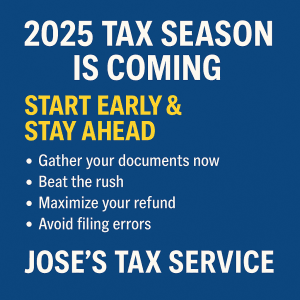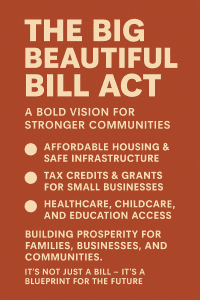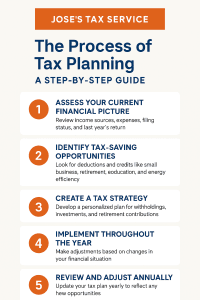
🎉 Jose’s Tax Service 2026 Scratch & Win Giveaway!
Tax season just got more exciting! Jose’s Tax Service is giving you multiple chances to win instantly this upcoming 2026 tax season — and…

Tax season just got more exciting! Jose’s Tax Service is giving you multiple chances to win instantly this upcoming 2026 tax season — and…

Today, we pause to give thanks—for family, for community, and for the trust you continue to place in us year after year.As your local…

[vc_row][vc_column][vc_column_text css=""] At Jose’s Tax Service, we’re always looking for ways to thank our clients for trusting us with their tax and financial needs.…

[vc_row][vc_column][vc_column_text css=""] As we approach the 2025 tax season, one thing is clear: the earlier you prepare, the smoother your filing experience will be.…

In a time when communities across America are struggling with rising costs, outdated infrastructure, and a lack of opportunity, the Big Beautiful Bill Act…

Finding a job can be a challenge and for certain groups, it can be even harder. The Work Opportunity Tax Credit is a federal…
WASHINGTON — The Internal Revenue Service today announced that interest rates will remain the same for the calendar quarter beginning Oct. 1, 2025. For…
It’s back to school season, and with that comes potential out-of-pockets costs for educators. The Educator Expense Deduction lets eligible teachers and administrators deduct…

By Jose’s Tax Service, New Haven, CT Tax planning isn’t just about filing your return once a year—it’s about creating a strategy that helps…

Taxpayers who requested an extension to file have until Oct. 15, 2025, to do so, and some may choose to hire a tax return…